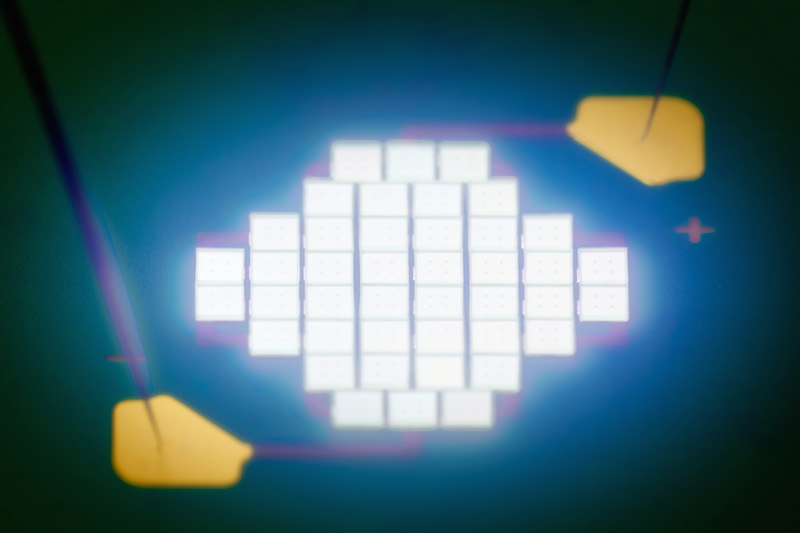Ground-breaking flip-chip technology for LED modules
LED-based illumination has many advantages and vast application potential across all areas of life. However, the packaging requirements of LED chips are radically different to those of conventional lighting solutions. One crucial factor that can lead to reduced lifetime is the thermal management of each individual LED chip in a lighting module.
Various strategies to improve thermal management by dissipating heat from the system already exist. One strategy to reduce thermal resistance is minimizing the distance between the LED’s heat generating p-n junction and the substrate [4]. Typically, an LED module comprises one or several LED chips integrated into an LED package (1st level interconnect), which is mounted on a PCB by reflow soldering. However, a completely new assembly concept has now been developed as part of the research project FlipTheLED. Instead of first integrating the LED chips into an LED-package, the chips are mounted directly onto the PCB, which reduces thermal resistance. While anode and cathode are positioned on the chip bottom side, the new approach makes the conventional top side connection redundant. The approach has a number of key advantages over traditional assembly techniques using LED packages [5]. Manufacturing cost is reduced by the elimination of wire bonding as processing step. Moreover, the p-n junction, which is where the system’s heat is generated, is directly adjacent to the heat sink layer, such that the thermal resistance of the complete system can be reduced.
The LED chips’ physical parameters (gap between anode and cathode of < 200 µm) and aspects of the processing workflow are the main challenges in terms of packaging technology. Initial experiments with SnAgCu solder showed that the soldering process had caused the LEDs to tilt. Plane-parallel assembly of components is vital for homogenous emission characteristics. By, firstly, testing a variety of solders and adjusting the solder profile’s processing parameters and, secondly, precisely configuring the solder gap, demonstrators with minimally porous, evenly thick interconnection layers using SnAgCu were achieved. Two functional demonstrator types, each with 42 LED chips, were assembled using a full automated die bonder (Datacon Evo), and were subsequently tested. Later in the project, silver interconnects, which are more reliable than SnAgCu bonds, were tested using the demonstrators. Previous research had already established that the lifetime of silver interconnects is 100 times greater than that ofconventional solder bonds.
We are grateful for funding by Austrian federal government (particularly the Austrian Ministry for Transport, Innovation and Technology), represented by the Austrian Research Promotion Agency (FFG), as part of the 7th call of the »Production of the Future« program (project number: 848574, title: FlipTheLED). We also thank our project partners Materials Center Leoben Forschung, Tridonic Jennersdorf, and Häusermann for the fruitful collaboration.
 Fraunhofer Institute for Reliability and Microintegration IZM
Fraunhofer Institute for Reliability and Microintegration IZM